Germany
Water Management System of Augsburg
The Water Management System of Augsburg has produced various technological innovations in the areas of waterways and drinking water supply.
The system consists of 22 different components, varying from hydroelectric power stations to fountains. It has its origins in the Middle Ages when canals were built to bring water to mills, tanneries, textile producers and goldsmiths. From 1545, there was a strict separation between drinking water and water for industrial use.
Community Perspective: the site includes a bunch of different components scattered in and around town, which cover a period of almost five centuries of water management. The interpretation of the site is quite poor and most components are inaccessible (historic interiors often not having been preserved). The water towers at the Red Gate may be the most memorable components. Hubert and Solivagant have incorporated a bunch of others as well in their reviews.
Site Info
Official Information
- Full Name
- Water Management System of Augsburg (ID: 1580)
- Country
- Germany
- Status
-
Inscribed 2019
Site history
History of Water Management System of Augsburg
- 2019: Inscribed
- Inscribed
- Type
- Cultural
- Criteria
- ii
- iv
Links
- UNESCO
- whc.unesco.org
- Official
-
- wassersystem-augsburg.de — Stadt Augsburg: The Water Management System
All Links
UNESCO.org
- whc.unesco.org — whc.unesco.org/
Official Website
- wassersystem-augsburg.de — Stadt Augsburg: The Water Management System
Community Information
- Community Category
- Secular structure: Civic and Public Works
Travel Information
Recent Connections
-
Water Mills
It has at least two functioning water w…
-
Perfect Inscriptions
2019 -
Mozart
Mozart's family came from Augsburg and …
Connections of Water Management System of Augsburg
- Individual People
-
-
Mozart
Mozart's family came from Augsburg and he made frequent visits (wiki)
-
- Trivia
-
-
Olympic Venues
The Eiskanal was built for the Olympics of 1972.
-
- History
-
-
Built in connection with an Anniversary
The three monumental fountain systems of the Augustus, the Mercury and the Hercules fountains, are located in the area of the present day Maximilianstraße. They were built between 1594 and 1602 on the occasion of the 1600th anniversary celebrations of the city and were meant to be expressions of the abundance of water in the city. (nom file)
-
- Architecture
-
-
Brick architecture
Both hydropower plants are in brickwork in the historicist style (nom file); aqueduct as well
-
- Damaged
-
-
Damaged in World War II
The only structure that was bombed was the power plant of Senkelbach/Riedinger, which in 1945 had its roof rebuilt and the generation of electricity recommenced. (AB ev)
-
- World Heritage Process
-
-
Perfect Inscriptions
2019
-
- Religion and Belief
-
-
Hercules
Hercules Fountain
-
- Human Activity
-
-
Locations for playing sport
Kanustrecke Eiskanal - an artificial whitewater river in Augsburg, Germany, constructed as the canoe slalom venue for the 1972 Summer OlympicsSee en.wikipedia.org
-
Textiles
Especially in the east of the city, numerous textile factories along the canals and water courses, so that Augsburg was also called the Manchester of Germany. (nom file)
-
- Constructions
-
-
Water Mills
It has at least two functioning water wheels: Wasserrad am Vogeltor and Wasserrad am Schwalllech.
-
Canals
network of canals -
Pumping Stations
-
Monumental Fountains
three monumental fountains of extraordinary artistic quality are the Augustus Fountain (from 1594 to today), Mercury Fountain (from 1599 to today) and Hercules Fountain (from 1602 to today) (AB ev) -
Aqueduct
The entire bridge structure was completed in 1777, and still spans the city moat today ...The aqueduct served to enable pedestrians and the Vorderer Lech (Western Lech Canal) to cross the dry city moat: at the lower level, the water was transported via a walled channel to the waterworks at the Rotes Tor, while the upper level served a bridge to access the Rotes Tor. (Nom file)
-
- Timeline
-
-
Built in the 16th century
By 1545 a strict separation between drinking and process water was being kept throughout the system of watercourses. (AB ev)
-
- WHS Hotspots
News
No news.
Recent Visitors
Visitors of Water Management System of Augsburg
- Adrian Turtschi
- Alexander Barabanov
- Alexander Lehmann
- A. Mehmet Haksever
- Ana Lozano
- Argo
- ArnaudFilloux
- AS
- Aspasia
- Astraftis
- a.thum
- Atila Ege
- BaziFettehenne
- Bernard Joseph Esposo Guerrero
- Bill Maurmann
- Bin
- Can SARICA
- Carlo Sarion
- Caspar
- Cezar Grozavu
- Christian Wagner
- christof
- Christoph
- Claire Bradshaw
- Clyde
- Colossus
- Csaba Nováczky
- ctravel
- CugelVance
- Damientournay
- Daniel Chazad
- Danny L
- David Berlanda
- Dimitar Krastev
- Dirk-pieter
- Dorejd
- Els Slots
- erdsaumnaht
- Erik G
- Erik Jelinek
- Errol Neo
- Eva Kisgyorgy
- Evgenii
- fabi-ddorf
- Fan Yibo
- Federico P.
- Feldhase
- FS
- George Gdanski
- GeorgeIng61
- GerhardM
- Harald T.
- Harry Mitsidis
- henrik_hannfors
- heywhatever2
- Hubert
- Iain Jackson
- Ivan Rucek
- Jakob F.
- Jana and Matt
- Janina Lehmann
- Janos
- Jan-Willem
- Jan Zimmermann
- Jarek Pokrzywnicki
- Jasam
- Javier Coro
- Jawnbeary
- Jay T
- Jean Lecaillon
- Jeffrey Chai
- Jezza
- JobStopar
- Jonas Hagung
- Jonas Kremer
- Kasia M.
- Kbecq
- Ken DJ
- KentishTownRocks
- Klaus Freisinger
- Knut
- Kristin
- Krzysztof B
- LaVale
- lichia
- Lisu Marian
- ljowers
- Luboang
- Lucio
- Luis Filipe Gaspar
- Maciej Gil
- Manuelfunk
- Marcobrey
- marc Rouserez
- Martin
- Martinacurra88
- Martina Rúčková
- Matejicek
- MaxHeAnouBen
- MaYumin
- MH
- Mikko
- Miloš Tašković
- miri2808
- MoPython
- Mstrebl1990
- nan
- Nasebaer
- Nicole Lampos
- Nihal Ege
- Patrik
- Paul Schofield
- peacemaker2142
- Philipp Leu
- Philipp Peterer
- Piotr Wasil
- PlacesWeHaveBeenTo
- Porcho
- Potsdamer
- Rafał Kałczuga
- Ralf Regele
- Ralf Rotheimer
- Randi Thomsen
- ReallyDeepThoughts
- Reiseblitz
- Reisedachs
- Reza
- Rick Ohm
- Roger Ourset
- Roman Bruehwiler
- Rudegirl
- Sabrina Liebehentschel
- scubarrie
- Sebasfhb
- shoaibmnagi
- SirLoydd
- Solivagant
- Stanislaw Warwas
- Stefan A. Michelfeit
- Stijn
- Svein Elias
- Taotao Chen
- Tarquinio_Superbo
- Thomas Buechler
- Thomas Harold Watson
- Thomas van der Walt
- Thorben
- Tim Allen
- triath
- Tschibi
- Tsunami
- UncleSlavi
- Vanessa Buechler
- VLabhard
- WalGra
- Walter
- Westwards
- Wojciech Fedoruk
- Wo_ko
- Xiquinho Silva
- Yevhen Ivanovych
- Zhenjun Liu
- Zoë Sheng
Community Reviews
Show full reviews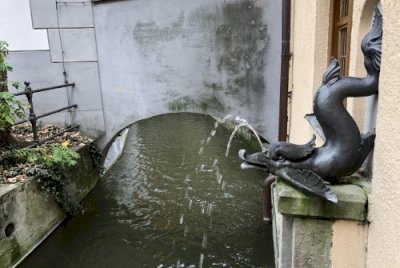
I wasn’t terribly interested in the Water Management System of Augsburg, but I did feel an urgent need to make my German WHS score ‘complete’ again! So last Saturday I ventured out to this Bavarian city on a day trip from my home – flying Amsterdam-Munich and then taking a train to Augsburg. Even for an experienced traveler and German speaker, buying a train ticket from a vending machine proved to be like finishing a moderately difficult exam, having to answer question after question – resulting in a final bill of 50.90 EUR for the return trip to Munich Airport - Augsburg. Ouch!
So this day consisted of a lot of sitting in planes and trains. The stay was to be so short that I did not even bring a bag and only kept my iPhone in a coat pocket. No passport as well; for a few months, I am using only a credit card-sized ID card for travels within the EU (which feels a bit like having a second passport, so the real one can be safely sent to some embassy for a visa). The iPhone fortunately gave me access to some good podcasts. I recently started listening to the Counting Countries series, so while I was physically in Germany my mind wandered off to Tajikistan and Niger.
From Augsburg railway station you can walk to the historic city center in 15 minutes. You pass through shopping streets, where it was pleasantly busy and perhaps only the …
Keep reading 0 comments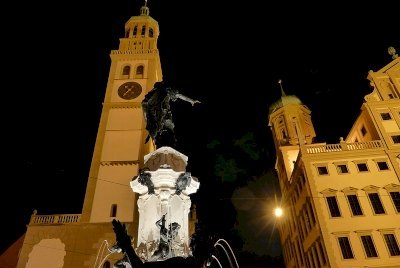
I visited this WHS in Summer 2019 as a stopover on my way back from Czechia. Overall, I quite enjoyed what this quaint Bavarian town has on offer even though I felt its water features have nothing particularly unique or outstanding. Even in Bavaria there are similar towns with equally lovely fountains and water features, let alone in Germany as a whole or on a European or worldwide level. Strangely enough it reminded me of Regensburg which I had rated similarly.
I'm very glad I visited mainly for the Fuggerei apart from the extra tick after completing Czechia. Had it not been for its inscription, I would have missed out by not visiting as I wasn't aware of its existence. Unfortunately, Augsburg's inscription does not add any substance or fill in any gap in Germany's quite saturated WH list, but I suspect that those who drafted its nomination knew that this was precisely the case yet headed on to attract more tourists. For those of you who haven't visited the Ice Age Caves yet though, I'd recommend sleeping over in Ulm rather than in Augsburg as there's much more to see and do there.
Keep reading 0 comments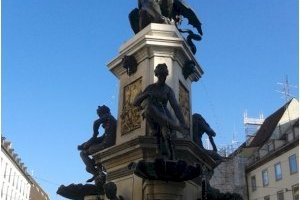
I spent few days in Augsburg in September 2019, and I must say it is very nice and very interesting place of Southern Germany. Despite a demage during WWII and modern (re)constructions, the historical core has its charm and refined character. It is relatively large town with several distinct districts: (1) the main axis with the highest concentration of monuments and museums goes from the Augsburger Dom, through Rathausplatz with huge Municipal Hall and Perlach Tower (+ the district adjacent to Rathausplatz in direction the railwaystation), alongside Maximilian street to the area around the monumental church of SS Ulrich and Afra; (2) The Lech District with a net of water canals, towers and other water works; (3) The area around Fuggerei. All together, it took me one full day to explore the most interesting places and museums.
As the main monuments of Augsburg are of national importance and would have no chance to become WHS, the many-kilometers-long system of water canals and other water-works were proposed - and it worked (somehow). This issue reminds me Bologna, where instead of the historical center many kilometers of porticoes are proposed as TWHS, and I will not be surprised if it (sadly) works also in that case.
From the inscribed properties I explored the Lech canals (the entire Lech district is a buffer zone) which are not very spectacular. The most interesting area is probably the ensamble of water-towers around the Red Gate, and also the Butchers Hall is nice building. …
Keep reading 0 commentsKlaus Freisinger
Water Management System of Augsburg
Water Management System of Augsburg (Inscribed)
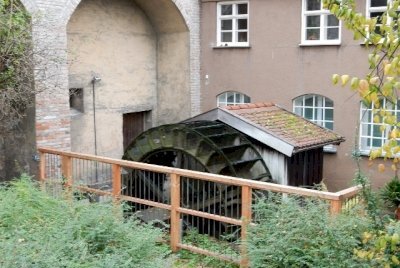
Augsburg is a great historic city with many interesting features and one would have expected a nomination of the historic centre and/or the Fuggerei (the social housing complex built by the world's wealthiest family at the time). The nomination of the water management system came as a bit of a surprise to me, but I guess this is a way to stand out from the crowd of medieval cities and to put a more unique angle on their historic heritage. It's of course not the only WH site focussing on water management, but it does give a rare overview of its historic development from Roman and medieval to modern times. Basically any visit to Augsburg will bring you in contact with this site, and it is very pleasant to walk through this historic city and admire its many beautiful buildings. First, though, I took a taxi out to the Hochablass weir on the Lech River, one of the most important sites which originally dates from the Middle Ages (the current construction is early 20th century, though). You can walk across the weir to the canoe course built for the 1972 Olympics. From there, my taxi took me back into town to the Rotes Tor (Red Gate), the oldest existing waterworks in Central Europe. From then on, it was easy to explore the city on foot. There are many canals and millwheels (at the Vogeltor) to see, plus several interesting buildings like the Stadtmetzig (17th century), which used the canal for …
Keep reading 0 comments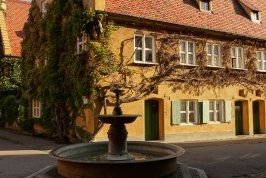
Always trying to stay ahead of the curve, i.e. the upcoming German nominations, and using a Deutsche Bahn free travel reward earned by countless commutes to Berlin I stayed for a night in Augsburg. I had passed through Augsburg often before when traveling between Stuttgart and Munich, but never made the effort of visiting. So it came as a pleasant surprise to find a lovely Southern German city.
I did most of my site seeing in the morning walking first in the direction of the Lech river and visiting the locations there. And then I headed back into town. I can confirm there is plenty of canals and water management in the city, but I did not see an outstanding component worthwhile mentioning.
Augsburg overall, though, holds plenty of interesting churches and other buildings, many due to the patron of the town, Jakob Fugger. Once (15-/16-century) dubbed the richest man in the world, he ruled from Augsburg a banking and trading empire with some mining operations thrown into the mix for good measure. To this day, the Fugger Bank continues to operate a private bank in Augsburg. The most notable structure of Fugger is the Fuggerei, the first social housing complex that operates to this day. For 0.90 EURper year and daily prayers for the Fugger family, a Catholic in need can reside in the complex.
Unfortunately, Augsburg was heavily bombed in the Second World War as several German weapon factories were located in …
Keep reading 0 comments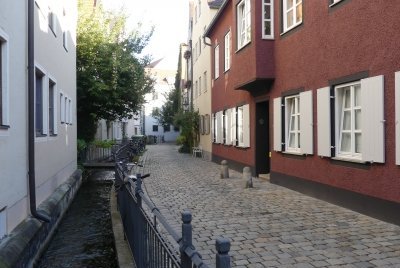
Augsburg must be aggrieved at not being on the WH list. It is one of many 2** Michelin cities in Germany with a fine historic pedigree but, unlike others which got in earlier with palaces and cathedrals, it would seem to have “missed out”. Its overall historic ensemble isn’t perhaps “special” enough and, whilst it possesses many important buildings (The Rathaus has been described as the "most significant Renaissance secular building north of the Alps" - though Michelin grants it not a single star!), none would seem to justify individual UNESCO recognition (Though the “Fuggerei” claim to be the World’s first “social housing” complex still in use - there are many existing WHS which gained their inscription with rather less “significance” than that!). What to do??? Clearly something was needed which, as the Turismus Augsburg Web site comments - “fallen sie nicht in die Kategorie jener Kulturstätten, die auf der Welterbeliste bereits überrepräsentiert sind und damit geringere Aussichten auf Aufnahme haben.” (“is not in the category of cultural sites that are already over-represented on the World Heritage List and therefore have less chance of admission.”)
It appears that Augsburg has, across at least 6 centuries, been a “Cluster Wasserwissen” (“Water knowledge Cluster”), and even the “Silicon Valley der Wassertechnologie” (Genuine quotes!) - and has constructed its nomination for 2019 around that aspect of its history. Now, my Michelin guidebook seemed to know nothing of this beyond a very …
Keep reading 0 comments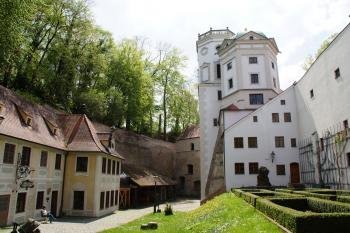
I am pretty sure most people in Augsburg did not realize that the historic water management has the potential for a WHS until it was proposed for the new German tentative list. Other sites in Augsburg were discussed in the past, the Town Hall or the Fuggerei, the world's oldest social housing estate. But after the proposal was submitted, a lot has been done to promote this idea. Since 2013 so-called "Wassertage" (water days) are organized every first Sunday of the month in summer. Several free guided tours to otherwise inaccessible historic water towers and hydropower plants are offered. In June 2013 I had a business meeting in Munich and I took the opportunity to spend the following weekend in Augsburg. I visited the main sites of the nomination: the historic water towers at the Red Gate, the waterworks at the Hochablass and the hydroelectric power plant at the Wolfzahnau.
Augsburg is located on a plateau at the confluence of the rivers Lech and Wertach. The water management in Augsburg began in the Middle Ages. Water from the two rivers and from small streams was conducted through the old town via a network of canals. The water was used for tanneries and dyeing mills, to drive water wheels, to supply the ditches of the city fortification, and to drain off the waste water. Most of the medieval canals have been preserved and make up the charm of the old town, especially in the Lech quarter, the former tanners and craftsmen's …
Keep reading 0 comments



